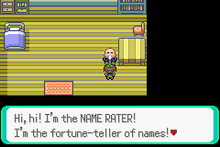
In case you were living underneath a rock this week, Play! Pokémon dropped a much-appreciated early announcement regarding the prizes for the 2017-2018 tournament season, as well as the invitational structure for the 2018 World Championships. Today’s Social Saturday is dedicated entirely to evaluating the new system’s pros and cons, as well as offering up constructive criticism on how Play! Pokémon might improve upon itfor 2019 and beyond.

Evaluating the new system: Pros and Cons
Pros
1. A more inclusive Worlds. I always thought it was a brilliant idea to re-brand the Last Chance Qualifier into a closed, slightly more exclusive event known simply as Worlds Day One. The inclusiveness of this event was put into serious question for 2016-2017, but a mid-season point “curve” resulted in many people getting invites they simply would not have been able to earn otherwise. I generally like it when some portion of Worlds is inclusive because it’s simply a good marketing tool: It encourages above-average players to hustle for a very attainable goal, and makes the real event of the weekend – Day Two – also relatively attainable. While the competency of your Worlds Day One opponents may be higher than those you face on the first day of an International event, going a 4-2 record is simply much easier mathematically, meaning that a Worlds Day Two berth for a relatively mediocre player at the time could mean growth into a major competitive identity.
tldr – I think the structure of Worlds Day One is improved because it gives players an attainable goal, and offers a reasonable gateway for unknown players to rise in the ranks.
2. Transparency and timeliness. Whereas in the previous seasons we spent months into new seasons clueless about just what these big tournaments of ours would mean, Play! Pokémon has done a superb job laying out as many early details for us as they could. It would have been nice to get Liverpool details confirmed earlier than they were, but I think some easy guesswork was all we needed to know it would be essentially the same thing. A late July drop of this information is about the best we could have asked for.
3. It attempts to differentiate large International Championships from small ones. Although I still have many concerns about the details of next season’s Championship Point spread, I’m happy to see that the point payout will be deeper for some International Championships than others.
Cons
1. The Championship Point structure has more holes in it than Swiss cheese. While it’s great that Worlds is more inclusive, in many ways it’s the easiest it’s ever been for people to “buy” invitations. By that I mean players are now virtually guaranteed invitations as long as they travel to as many Regionals as they can, resulting in anyone able to make Pokémon their obsessive hobby capable of getting an invitation, even if they have a severe lack of skill. While I’m by no means elitist on the topic of invitations to an event like Worlds, nor do I feel we need to ever go back to something as limited as 64 people for 2007, the bar is now so low that any bad player with enough free time and cash, as well as a decent enough archetype, will qualify.
Because there are so many issues I have with the new point structure, even compared to the 2016-2017 season, here are some brief comments:
-No Best Finish Limit for Regionals, and zero practical BFL for Internationals. While these events are certainly a notch higher than League Cups and have much more on the line, I find it bizarre they made zero effort to curb people’s ability to spam upper-tier events. Andrew Wamboldt of TheCharizardLounge.com made an excellent point that an unlimited BFL means players literally could trade going t League Cups in for hitting up the Regional Circuit. However, I think it’s still ultimately a problem because it inevitably results in a system where we are simply not coming close enough to calculating a season’s best players.
-Zero substantive change to Internationals Championship Point payouts. Play! Pokémon should have done the same sort of serious contrast between Melbourne and Indianapolis that the fans did, and come to the simple conclusion that Championship Point payouts of 130 all the way down to 64th place in a 260 person tournament is absurd. While I certainly agree that no system can ever be perfect, and we owe a lot of respect to the hard work P!P does in designing a system like this, there’s no way around several of the most important point choices being bizarre and inappropriate.
-Special Events now being worth the exact same point payout as Regionals. While the vast majority or even all of the SPEs are less attractive options due to not giving out direct cash prizes like Regionals, it’s nuts to see a flat-out less attractive tournament series receive the same points. It’s a more extreme version of the hypothetical where League Challenges – fun entry-level events – were given the exact same points as League Cups, which became an essential element to the Day Two grind this past season. It inevitably lures the rich frequent flier club players into areas which desperately need Championship Points, such as Puerto Rico and Mexico, and in the long run actually results in a less skillful World Championship because a little bit of variance in favor of a Day Two qualifier in the U.S. could result in almost no invites for whole territories or even entire countries.
I could go on, but let’s save it for the comments.
- The stipend system for Internationals is improved, but leaves much to be desired. When you’re having Regionals start as early as July, why do only the results from 2016-2017 count towards determining who gets help going to London in November? This is definitely an “in-the-weeds” sort of beef, and not at all something that’s terribly relevant to the normal playing community, but I think quarterly awards would have easily been the best way to go in order to keep the pools of players at these events unique and fresh.
3. Day Two in general appears to be a grind. Unlimited Regionals for Best Finish Limits, coupled with increased awareness about the importance of International Championships could easily mean that the top 16 players next season may need as many as 1,500 Championship Points in order to get a free pass into Day Two.
Constructive Criticism

“Hello, hello! I am the official TOURNAMENT SEASON RATER! Want me to rate the CHAMPIONSHIP POINTS of your TOURNAMENTS?” Now that I’ve discussed a few pros and cons of the new structure, let’s consider three very important points I hope Play! Pokémon keeps in mind, and perhaps applies in order to improve 2019 and future seasons.
1. Don’t change course mid-season. No matter how small the Junior division looks, and no matter how “packed” you want to make the World Championships look, please don’t surprise us with a sudden change in course.
This point is mostly jaded by bias, as Play! Pokémon’s decision severely disadvantaged me personally. I For the first half of the season, I simply chose not to participate as much: the highest-ranked event I played in until February was a League Cup, in part because I didn’t want to pull the Regional circuit grind in an effort just to get a normal invite, so I figured the most cost-efficient approach would be a strong showing at the International Championship. I was more or less right about this: Had there not been a point bump, I would’ve clinched my Day One invite in Mexico – a mere three weeks before the NAIC.
Play! Pokémon saw it was going to have a very exclusive, very short day one, and so to accommodate for a more inclusive pool, bumped points across the board. That’s all well and good, except for the fact that they bumped points for nearly every possible finish, mediocre ones included. This coupled with an extremely generous Best Finish Limit for Internationals and Regionals resulted in the frequent flier club essentially locking anyone else out from finishing in the top sixteen, even with a stellar finish at the NAIC. Had Pokémon just stuck with an easier or harder system from the start, I probably could have made better decisions with my season; instead I got punished severely for not riding the circuit from September to January.
It’s a small universe I’m a part of, since this change only really disadvantaged about a dozen other competitive players, so let’s also look at it from the normal player’s perspective. There were more than a few people who gave up on this season entirely due to how hard it looked to qualify. And they’re right, because if you wanted an invite in the Master’s Division without going to an IC, you had to win a minimum of four tournaments: two league cups and two regionals! All these regionals still had marvelous attendance, but had Play! Pokémon simply started out with the easier system, rather than change course midway, it would have been so much better.
2017-2018 is clearly a year geared towards making it easy to qualify for Worlds, so I hope we don’t see a sudden, not-easy-to-predict change like this again. Even if it’s a popular decision in the moment, Play! Pokémon runs a big risk of destabilizing its own tournament season, since the player base wants and needs as much information and stability as it can get.
2. It’s fine if you want an inclusive Worlds – just be sure you have the venue space. As much as I love the Worlds experience and appreciate what Play! Pokémon does to make it happen, having such an inclusive World Championship became a very bad thing when it became apparent that the venue was tinier than baby shoes. Constantly having to flash my badge and wait an hour for Day One to start was a stressful experience, and despite San Francisco being the home to Niantic during the height of Pokémon GO’s popularity, Worlds 2016 does not rank among my best Pokémon experiences.
To be fair, I’m not sure they even knew it was going to be in San Francisco by the time they announced the structure, but it’s still imprudent planning to make Worlds so easy to qualify for and yet have people waiting outside the venue for over an hour just to get in.
3. While your players may sometimes be rude in the way they communicate, please don’t ignore them when they’re clearly speaking out in the best interest of the competitive TCG’s future. It’s easy to become desensitized to a person’s argument as “just another salty person being salty,” but hundreds of people have already cited many of the same issues I have in this post. I’m sure it’s hard seeing your hard work met with language much harsher adjectives than “absurd” or “bizarre,” but that’s because your players are passionate. What may seem to be a small issue regarding the Championship Point spread actually makes a big difference in how your competitive brand is perceived, as well as how competitive players will continue to enjoy your game and your tournaments.
Posts like these don’t get called “Invitational Hazard” because everything is perfect, but they’re also not awarded passionate language like that when we just see the game as nothing more than a short form of entertainment. We really enjoy playing competitively, to the point where people spend the better parts of their day theorizing about the “best structure” for zero pay or accolades, so remember that even if players don’t use the nicest words, their hearts are in the right place.
